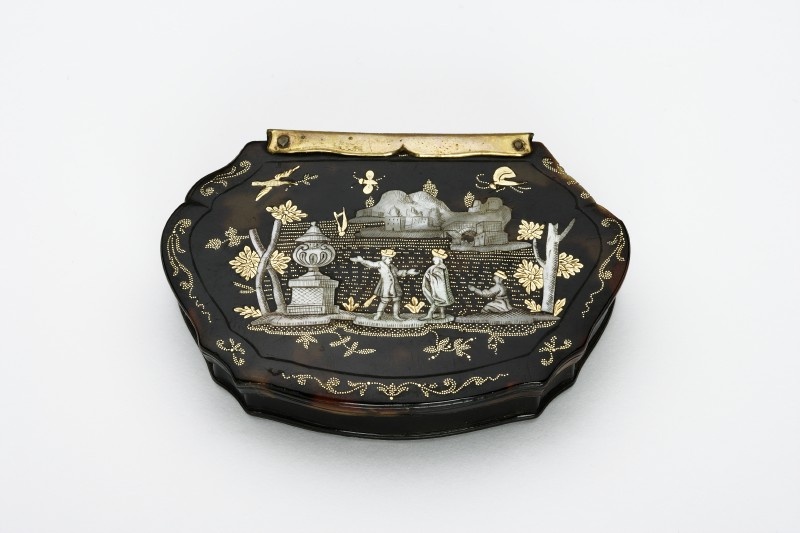Dosen jeglicher Art gehörten zu den im 18. Jahrhundert beliebten Galanterien. Neben Porzellan und Email fand auch das Luxusmaterial Schildpatt als Dosenkorpus Verwendung. In kochendem Wasser erweicht und in eine Form gepresst, wurde Schildpatt dann oft – wie auch im Fall dieser kartuschenförmigen Tabatiere – mit Metall- und Perlmutteinlagen verziert. Die als „pique“ bezeichnete Technik des Einlegens von Streifen und Punkten aus Metall entwickelte sich vom Ende des 17. bis zum Anfang des 18. Jahrhunderts in ganz Europa. Neapel war ein wichtiges Zentrum der Schildpattverarbeitung, dort gab es mehrere bekannte Werkstätten.
Schenkung von Hermann Ploss, Leipzig, 1876.
en

